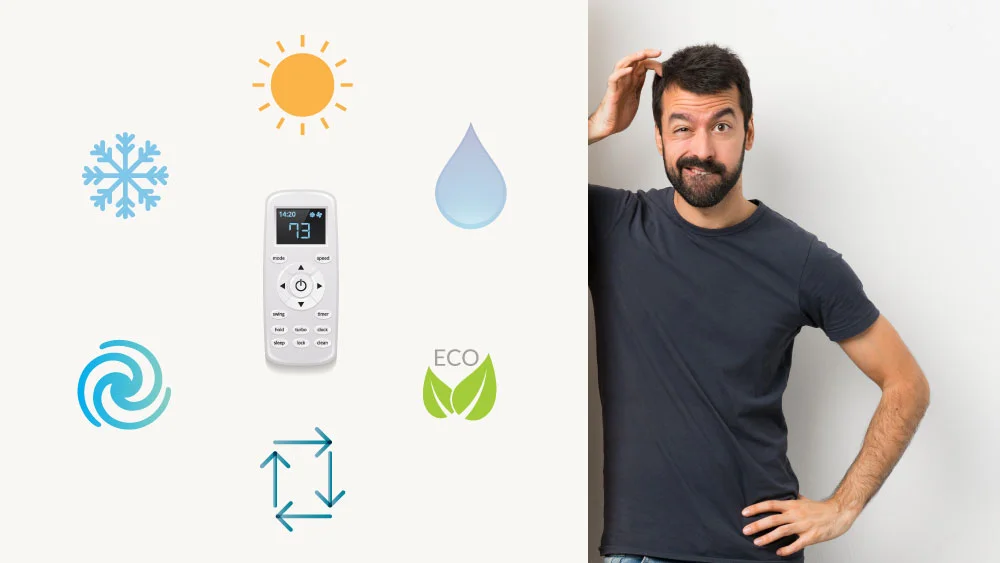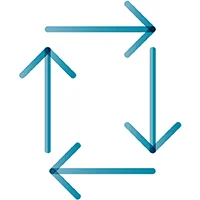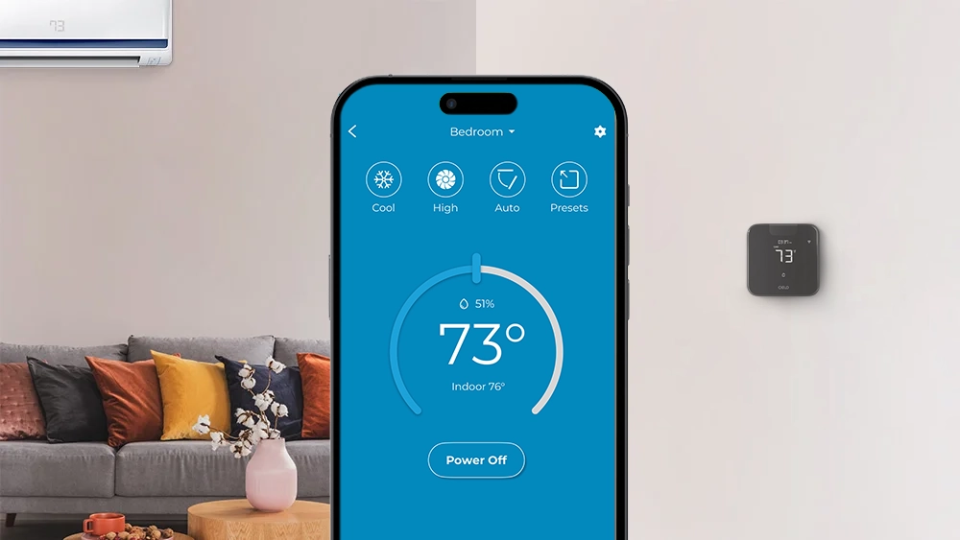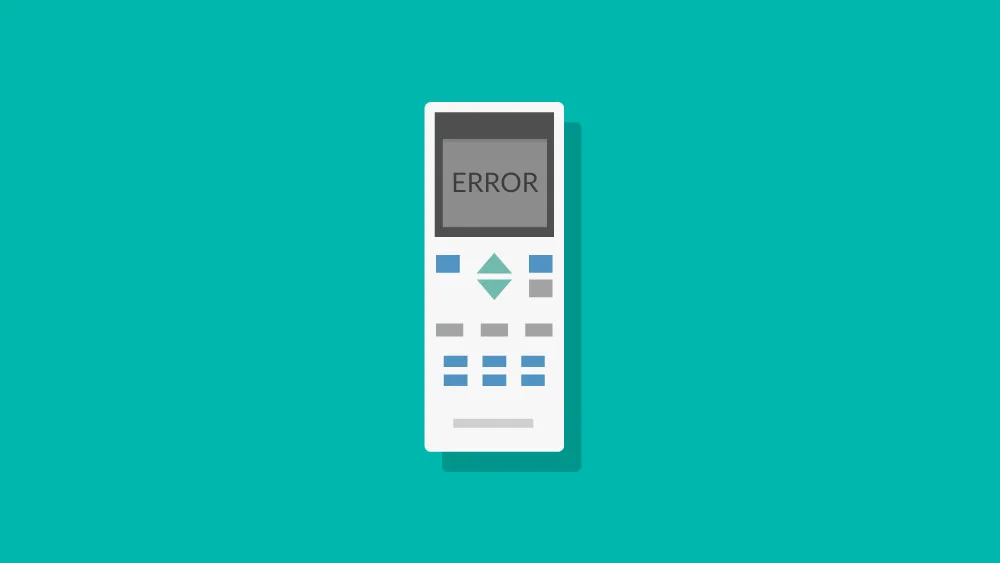
Key Takeaways
- AC remotes are equipped with different modes like Cool, Heat, Fan, and Dry.
- Standard remotes offer basic functions, universal remotes offer broad compatibility, and smart AC controls provide smart functionality.
- Upgrading to smart AC controllers provides features such as global control, scheduling, and geofencing for convenience and efficiency.
With numerous advancements in air conditioner technologies, you might be forgiven if you get confused by all the complex names and symbols on your air conditioner remote control. Unless you are very particular about your home environment, or you have read the manual, chances are you will only be aware of the heating and cooling modes of your air conditioner.
Currently, air conditioner remote controls are equipped with a number of features for your convenience. Apart from the standard cool modes, fan speeds, vane control, etc., many more symbols can be extremely confusing! Yet, learning about them can greatly help in maintaining the perfect home temperature.
In this blog post, we will run through a few of the AC modes commonly found on an AC remote, along with other modern features your unit might have. Plus some tips on making your AC smart!
Bear in mind that there are literally hundreds of AC manufacturers worldwide, each offering dozens of remotes. Each air conditioner remote control comes with its own technical jargon and patented names. Even though most of them use common functions, the exact labeling may vary. Hence, it wouldn’t be possible to cover each function offered by each manufacturer, or else this blog would turn into a thesis, and no one wants to read that!
With this little disclaimer, let’s dive right into it.
AC Modes on Your Remote Control
These are some common or standard modes that nearly all air conditioner manufacturers offer. This is by no means the final word, though, AC modes greatly depend on the air conditioning firm. Here are some common ones you must know and use to your advantage.
Cool Mode
![]()
This is the setting most of us associate with air conditioners. In this mode, your air conditioner turns on the compressor and pushes cold air into the room. When the internal temperature sensor within the AC senses that the desired temperature has been reached, the compressor will switch off and only the fan will run.
This is the most energy-intensive mode on your air conditioner remote control. The lower the temperature setting, the longer the compressor will run.
Fan Mode
![]()
When the fan mode is activated, the internal fan within the AC circulates air within a room. This is carried out without any cooling, much like a normal fan.
The major advantage of using the fan mode on ACs is the obvious energy savings as the compressor isn’t operating in this mode. Unfortunately, it does not offer any cold air; it simply circulates or blows air.
Dry Mode
If you live in a humid area, you’re definitely familiar with the dry mode on your AC. When it is a particularly humid day, but not too hot, and you have sweat rolling down your forehead, this is your go-to mode.
Dry mode removes the extra humidity in your room by cycling the compressor on and off for short periods. In the meantime, the fan is constantly running at a low speed. The compressor run-time is adjusted so that when the internal humidity sensor of the AC detects a low enough humidity level, it is turned off.
Heat Mode
In this mode, the airflow within the air conditioning unit is reversed. This means that hot air is introduced into the room rather than being blown out into the environment. Cold air, on the other hand, is ejected into the atmosphere.
The warm air is provided by the compressor, which is already in operation. Instead of cool air, the compressor now supplies warm air, making it a perfect setting for the colder months.
Auto Mode

Similar to the cool mode, the auto mode on your air conditioner remote control helps achieve and maintain a specified temperature set point. The AC automatically adjusts the compressor and fan speed in relation to the current room temperature.
Once the desired temperature is reached, the compressor is turned off, and the AC automatically adjusts the fan speed. Once the temperature again deviates from the setpoint, the compressor is turned on again, and the fan is adjusted to achieve the desired temperature immediately.
Sometimes, even the fan is turned off after the desired temperature is reached, saving even more energy.
Eco Mode
![]()
This is the mode we all love! Almost every modern air conditioner remote control has it now. It works by efficiently using your compressor and fan so that minimal energy is consumed to achieve the desired temperature.
Different manufacturers use different techniques to achieve this. Some set the desired temperature a few degrees above higher than your selection. When the AC achieves this temperature, the compressor is turned off, but the fan speed is maintained. This serves to achieve and maintain the desired temperature without extra energy use.
Turbo Mode
![]()
The exact opposite of eco mode, turbo mode goes all out to achieve the desired temperature as quickly as possible. Maximum power is used in this mode, with the compressor and fan operating at full tilt. This mode is also known as jet, powerful, fast, or high power.
As you might expect, energy use is very high in this setting, and it would be wise to use it only briefly. This can be ideal when it is extremely hot or extremely cold; once the temperature settles, you can turn it off.
Freeze Protection (FP) Mode
This mode is also known as Min. Heat, 8°C, or Low Heat (LH). In this operating mode, the air conditioner runs at minimum power, in heat mode to blow warm air in a room. It maintains a temperature of around 46°F (depending on the AC manufacturer) to prevent freezing points.
Such a feature is well-suited for homes in extremely cold climates, and where the indoor space is not occupied for longer periods. Upon activation, the freeze protection mode will prevent the interior temperature of the room from coming close to a freezing point. Air conditioners run at the lowest capacity, minimizing electricity use.
This mode helps prevent damage to sensitive electrical equipment and water pipes during extreme cold. The above-freezing ambient temperature would prevent that. This makes it ideal for applications in garages or outhouses/sheds, where occupancy is minimal but temperatures are above freezing.
Self-Clean Mode

With continuous use, dirt can accumulate inside your air conditioning unit, allowing harmful microorganisms to be transmitted into the air.
Self-cleaning or auto-clean mode prevents the growth of airborne bacteria by removing moisture from inside your heating/cooling unit. This mode is a savior in high-humidity climates. It cleans and dries your evaporator, keeping your AC running smoothly for the next cycle.
The self-clean mode on your HVAC unit gives you the peace of mind that the air you breathe is clean.
The self-clean function can be used in Cool and Dry modes, and in some models, Heat too. Once the mode is activated, the AC will run for around 30 minutes, after which it will automatically turn off. The timing may vary by manufacturer; refer to your unit’s user manual for the exact duration.
Follow-Me Mode

With new HVAC technology, you don’t have to deal with inconsistent room temperature or warm air spots. With the Follow-Me mode, in air conditioners such as Midea, your AC remote acts as a thermostat.
Normally, a temperature sensor is located in your AC, but with a Follow-Me remote, there is also a built-in thermostat in your AC’s remote control. Once the Follow-Me mode is activated, the air conditioning unit reads the temperature of the area where the remote is located and cools/heats accordingly.
This is great, as room temperature can vary greatly from one end of the room to the other. By accurately sensing the temperature of the area you want to cool/heat, you can better achieve your desired temperature. The AC will cool/heat based on the temperature around the remote control.
Cielo Breez Max, a smart AC controller, supports this feature. Once you activate the Follow-Me mode using the Cielo Home app, your smart controller acts as the thermostat.
In some air conditioners, this mode has a slightly different function. Here, you don’t have to wait for the entire room to cool or heat up before you feel comfortable. The Follow-Me AC mode directs the airflow towards you. This mode is also referred to as i-Feel in some air conditioner models.
In these air conditioners, a built-in dual-sensor technology senses motion and adjusts airflow direction accordingly. The direction is updated every 3 minutes. To activate this feature, use your remote and press the Follow-Me button, pointing at your unit.
Functions Available on Your Air Conditioner Remote Control
Apart from various AC modes, there are multiple settings that you can control using an air conditioner remote control. These help achieve the perfect temperature and enhance convenience.
AC Fan Speed
The air conditioner fan is the component that actually blows the cool or hot air into your room.
Most ACs have 4 fan settings: low, medium, high, and auto. The auto fan setting automatically adjusts the fan speed based on the current and desired temperatures. It is not necessary to turn on the fan mode on an AC to use this function.
AC Timer Setting
Most modern ACs have built-in timers. They allow you to set the runtime of an AC, thereby saving energy. A particularly useful case is during sleep, when you can set the timer for a few hours; when you are deep asleep, the AC will automatically turn off.
Some timers use a 24-hour clock, allowing you to set the time the AC must be on or off. Others allow you to set a specific number of hours during which the AC will operate.
Ionizer Function
Who doesn’t want clean air? The ionizer function is not ubiquitous in air conditioner remote controls, but it’s still fairly useful. When activated, a high-voltage electronic mesh within the indoor unit ionizes the air with negative ions. Dust particles and other contaminants are attracted to these ions, which helps remove them from the air.
Swing Control
You can control the position of the swing louver with this mode. There are different angles to choose from to adjust the airflow in the direction you prefer. Previous AC models only allowed for vertical swing controls, but now you are also able to control the swing vertically.
There is also an auto-swing function that continuously adjusts the angle of your AC’s vanes. This continuously blows the air in different directions.
Quiet Mode
This AC setting is also called the silent setting. When set, the unit functions as quietly as possible. This is achieved by reducing the fan speed to the bare minimum.
Types of Air Conditioner Remote Controls

There are a number of air conditioner remote controls that are present in the market. While you may be aware of the standard ones, universal and smart AC remotes can be extremely useful!
Standard AC Remotes
This is a basic AC remote that you receive with your air conditioner. However, some companies are also manufacturing more advanced controls nowadays.
A standard air conditioner remote control may have a display and a number of buttons through which you can switch the AC modes and functions. The display type may vary from remote to remote. Currently, there are three configurations on offer:
- Full-state display: This is currently the most popular type of remote on the market. Such a display has all the information available on the screen. Temperature, fan modes, operating modes, swing positions, timers, and any other auxiliary features your AC might boast.
- Temperature-only display: This shows only the current room temperature. These kinds of remotes are now out of favor and are only found on older models. It’s more convenient to view each setting on the display.
- No display: Most commonly found in older establishments and hotels, this type of air conditioner remote control has no display, and often the only information you can see is the current temperature on the AC unit itself.
Universal AC Remotes
Lost your AC remote? Can’t control your AC? Do not worry, since universal AC remote controls are just the thing for you. These remotes work with almost every AC brand you can think of. This is possible because of the unique electronic signature of each AC brand.
An important consideration here is that not all the modes on a universal air conditioner remote control will work with your AC. Some AC models may not support all the modes available on your universal remote.
Smart AC Remote Controls

This era is about smart technologies, and more AC manufacturers are now launching smart air conditioners. These units offer Wi-Fi compatibility within their appliances. While these units are on the pricey side, anyone can purchase a universal smart AC remote control that equips any air conditioner with smart functionality.
Contrary to universal remotes, even if an AC manufacturer does not offer smart features, the smart controllers can add those features to your unit. Using a smart AC remote control, you can control your AC using your smartphone, no matter where you are, as long as you have Wi-Fi. Moreover, depending upon the manufacturer and model, smart AC controls can come with additional features such as weekly scheduling or location-based controls, among many others.
Your best choice to make any mini-split, window,
or portable AC smart. Enhance your comfort and savings.

Possible Reasons Your AC Remote Is Not Working

This is the single most common complaint of air conditioner owners, using an AC remote control. The reason for your AC remote not working can vary, but we’ll go over some of the common ones:
Batteries Not Inserted Properly
When inserting new batteries, make sure to double-check the polarity of the batteries. The negative terminal of the battery should be attached to the negative terminal in the remote and the same with the positive. The batteries should be in place and should not be loose. This may seem obvious, but it is a very common reason that users often miss!
Infrared Transmitter Not Working
Your air conditioner remote controls work by transmitting an IR beam towards the AC. If your remote is old or has had a few drops of liquid fall on it, chances are the IR transmitter is not working properly. You can easily diagnose this problem at home. Point your mobile phone camera at the transmitter and give a command. The transmitter gives out a short blink then the transmitter is working fine. If not, then you may need to have the remote repaired, or may just need to replace it.
Error Codes in Remote Control
If you receive an error code on the display of your remote, consult your AC’s owner’s manual. It would have a listing of all the error codes you may encounter along with troubleshooting instructions. The AC manufacturers website or support helpline may be of assistance in case the manual has been misplaced.
What to Do if Your AC Remote Is Lost or Broken?

If you need to replace a lost or unfixable AC remote control, you have a few options to control your air conditioner without any problems. As a first step, contact your air conditioner manufacturer to arrange a replacement.
An easier option would be to make a small investment in a smart air conditioner control. You just need to provide Wi-Fi access to the smart controller, enter your AC model number, and the device will automatically become compatible. Moreover, it will make your air conditioner smart!
Smart controllers let you control your AC from anywhere in the world and provide additional features such as geofencing, scheduling, temperature, and humidity triggers, energy-saving options, and more. They are sure to be a welcome addition to your home comfort needs.










14 Comments. Leave new
MY YONAN UNIT WILL GO O IN COOLING MODE BUT WILL NOT GO ON IN HEATING MODE?
Make sure your thermostat is set to the correct mode. If it isn’t a thermostat issue, the next most likely culprit is a faulty reversing valve. A faulty valve will prevent your system from switching between the two modes correctly. Call an HVAC technician to get the valve checked and make repairs or replacements if required.
Very good knowledge base for new AC user….thanks for sharing
Fan Mode can be very helpful as circulating air also gives some cooling vs non circulating air. Also important is the fact that in Fan Mode the air goes through the air filter thereby cleaning the air. Depending on the type of filter and possible ionizing function cleaning your air this way is preferable vs a Standing Fan with no filtering function. In these times of Corona clean air can not be overemphasized.
Good
Thanks for the description.
Thank you 👌
Thank you. Well detailed
Learnt a lot! Thank you!
It’s really a nice and useful piece of information. I’m glad that you just shared this useful information with us.
Please keep us informed like this. Thanks for sharing.
Thanks a lot. The information is very helpful
My sister would like to have an ac installed in her room because she can no longer bear the heat. Well, I appreciate that you talked about its proper usage; I’ll make sure to inform my sister that the cool mode happens when the compressor is turned on and pushes the air into the room.
I cant get the display on remote to come on
Please get in touch with our support team at support@cielowigle.com or (+1) 425 529 5775.
amazing post about mode of air conditioner